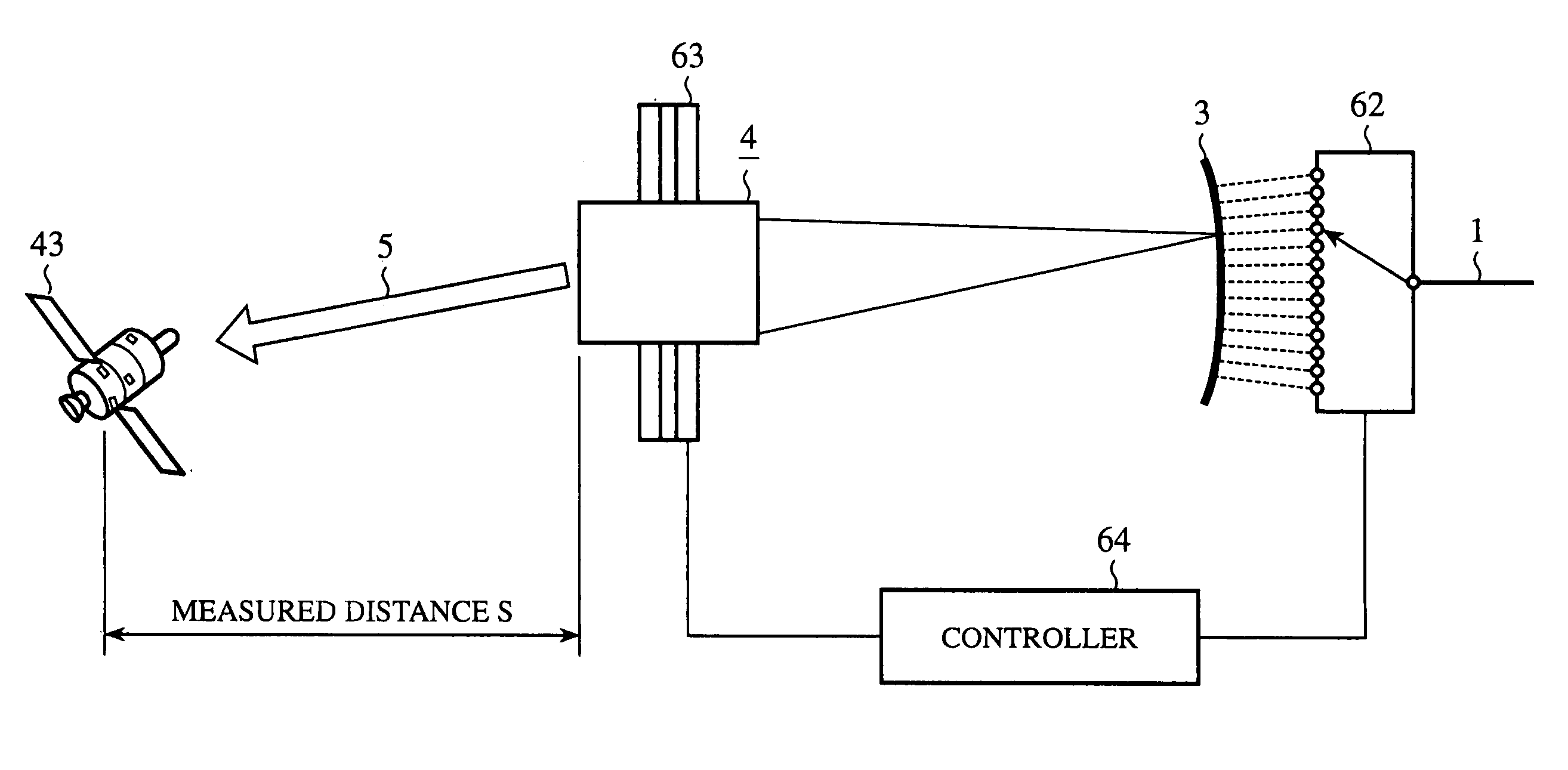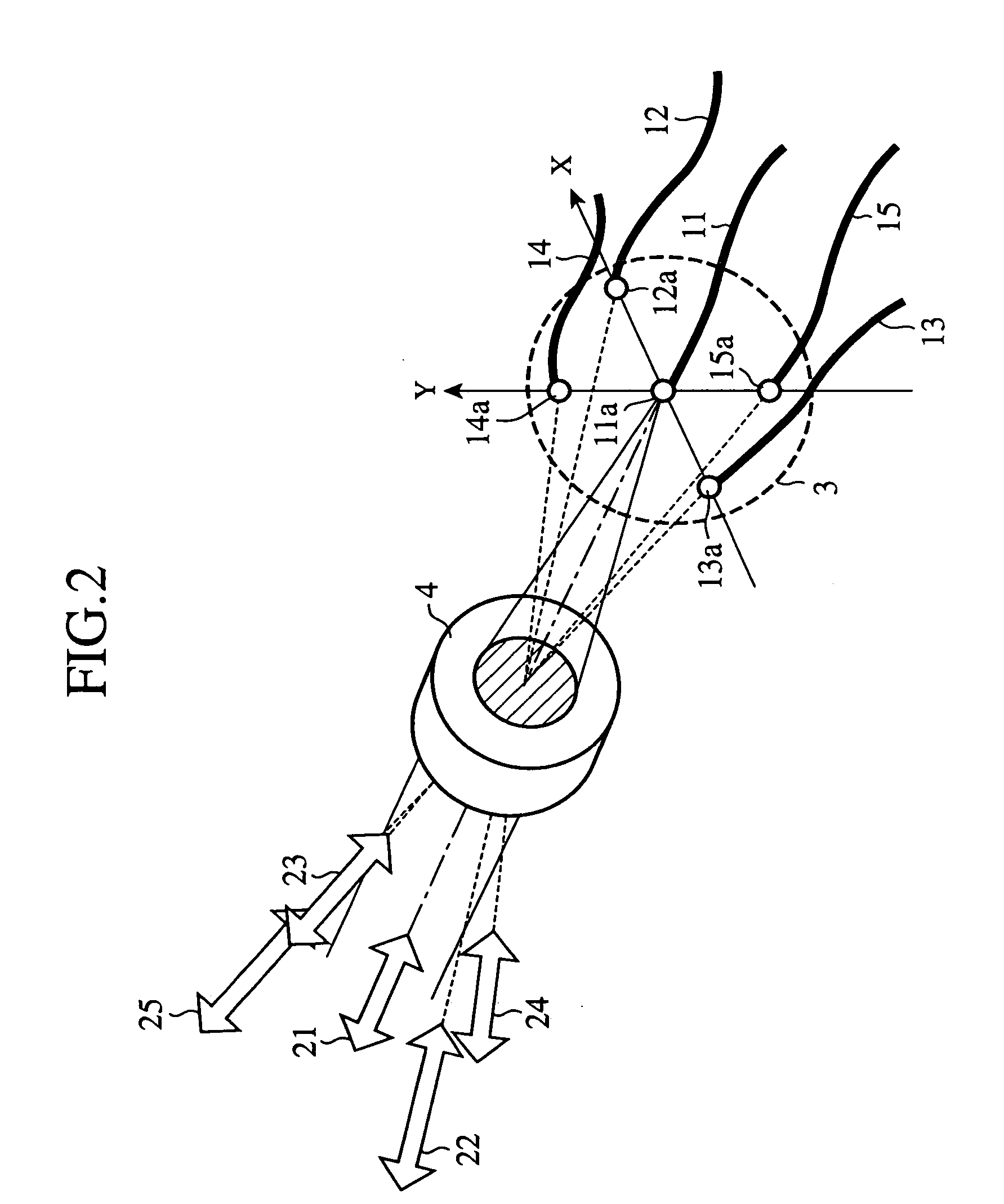Optical antenna
a technology of optical antennas and antennas, applied in the field of optical antennas, can solve the problems of increasing cost and weight, time lag,
- Summary
- Abstract
- Description
- Claims
- Application Information
AI Technical Summary
Benefits of technology
Problems solved by technology
Method used
Image
Examples
embodiment 1
[0019]FIG. 1 is a diagram showing a configuration of an embodiment 1 of the optical antenna in accordance with the present invention. In FIG. 1, optical fibers 1 and 2 of an optical transmitting and receiving section (optical transmitting and receiving means) radiate laser beams (optical signals) to be transmitted from the optical transmitting and receiving section to an optical transmitting and receiving system 4, and receive laser beams focused by the optical transmitting and receiving system 4 and supply them to the optical transmitting and receiving section.
[0020] An optical element mount 3 places fiber ends 1a and 2a of the optical fibers 1 and 2 at different positions on an image plane of the optical transmitting and receiving system 4. The optical element mount 3 constitutes an arrangement means. The optical transmitting and receiving system 4 consists of a transmission lens made from an imaging optical system such as a photographic objective, and transmits, when the fiber e...
embodiment 2
[0035]FIG. 2 is a diagram showing a configuration of an embodiment 2 of the optical antenna in accordance with the present invention. In FIG. 2, since the same reference numerals designate the same or like portions to those of FIG. 1, their description will be omitted here.
[0036] Optical fibers 11-15 of an optical transmitting and receiving section radiate laser beams to be transmitted from the optical transmitting and receiving section to the optical transmitting and receiving system 4. At the same time, the optical fibers 11-15 receive the laser beams focused by the optical transmitting and receiving system 4, and supply them to the optical transmitting and receiving section.
[0037] Optical transmitting and receiving directions 21-25 are directions of the laser beams set by the optical antenna.
[0038] The foregoing embodiment 1 is described by way of example in which the laser beams have fixed two directions as the optical transmitting and receiving directions. However, when the ...
embodiment 3
[0040]FIG. 3 is a diagram showing a configuration of an embodiment 3 of the optical antenna in accordance with the present invention. In FIG. 3, since the same reference numerals designate the same or like portions to those of FIG. 1, their description will be omitted here. The optical antenna of FIG. 3 is applied to a wind speed measuring LIDAR (Light Detection And Ranging) apparatus.
[0041] Optical transmitting and receiving sections 31 and 32 constitute an optical transmitting and receiving means for radiating outgoing laser beams toward the space, and for receiving incoming laser beams from the space. Laser light sources 33 of the optical transmitting and receiving sections 31 and 32 each emit a laser beam under the control of a controller 36. Optical path bifurcating sections 34 divide the optical fibers 1 and 2 into two branches each. Optical receivers 35 receive laser beams from the optical fibers 1 and 2, convert the laser beams into electric signals, and supply them to the ...
PUM
 Login to View More
Login to View More Abstract
Description
Claims
Application Information
 Login to View More
Login to View More - R&D
- Intellectual Property
- Life Sciences
- Materials
- Tech Scout
- Unparalleled Data Quality
- Higher Quality Content
- 60% Fewer Hallucinations
Browse by: Latest US Patents, China's latest patents, Technical Efficacy Thesaurus, Application Domain, Technology Topic, Popular Technical Reports.
© 2025 PatSnap. All rights reserved.Legal|Privacy policy|Modern Slavery Act Transparency Statement|Sitemap|About US| Contact US: help@patsnap.com



